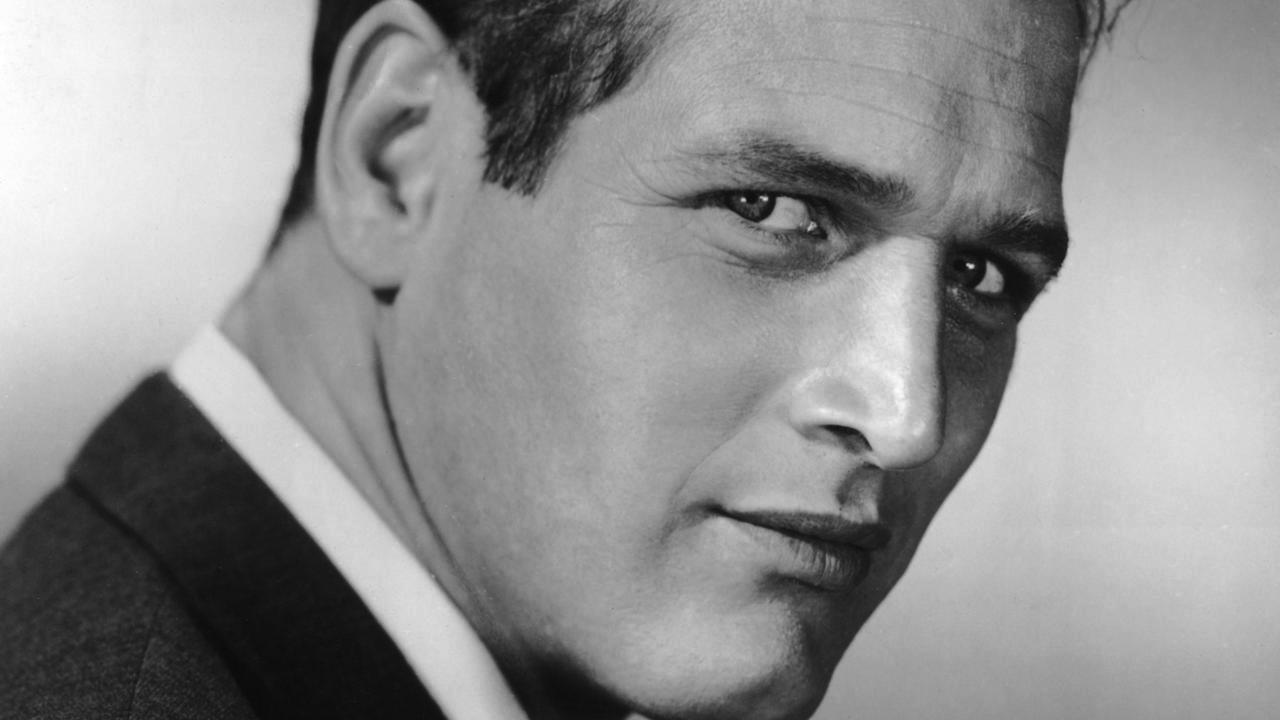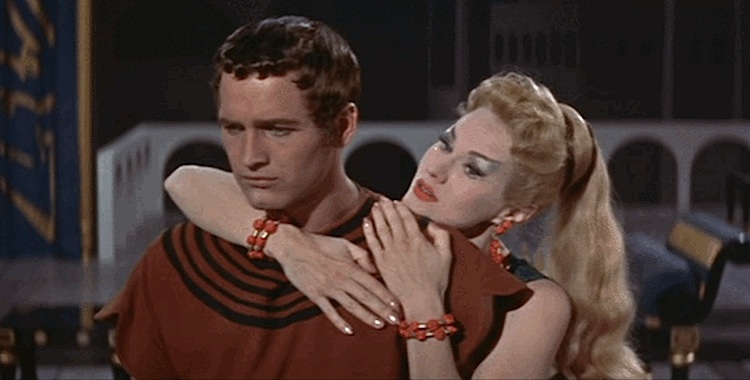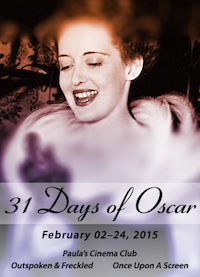 This post is part of the third annual 31 Days of Oscar Blogathon hosted by three classic movie bloggers: Kellee Pratt (@IrishJayHawk66) of Outspoken & Frecked, Aurora (@CitizenScreen) of Once Upon a Screen, and Paula Guthat (@Paula_Guthat) of Paula’s Cinema Club. The blogathon was started as an adjunct to Turner Classic Movies’ 31 Days of Oscar marathon during which TCM shines a spotlight on the hits and misses of the Academy Awards. Kellee, Aurora, and Paula will be focusing on a different aspect of the Oscars each week in February: The Actors, Oscar Snubs, The Crafts, and Pictures and Directors.
This post is part of the third annual 31 Days of Oscar Blogathon hosted by three classic movie bloggers: Kellee Pratt (@IrishJayHawk66) of Outspoken & Frecked, Aurora (@CitizenScreen) of Once Upon a Screen, and Paula Guthat (@Paula_Guthat) of Paula’s Cinema Club. The blogathon was started as an adjunct to Turner Classic Movies’ 31 Days of Oscar marathon during which TCM shines a spotlight on the hits and misses of the Academy Awards. Kellee, Aurora, and Paula will be focusing on a different aspect of the Oscars each week in February: The Actors, Oscar Snubs, The Crafts, and Pictures and Directors.
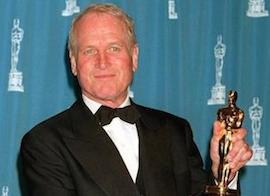 By the time Paul Newman finally won an Oscar (for The Color of Money in 1986), he was 61 years old and had been nominated for Best Actor six times. When he died in 2008 death at the age of 83, Newman had accumulated 10 Oscar nominations (including a 1969 Best Picture nod for his first directorial effort, Rachel, Rachel starring his wife Joanne Woodward). In addition to his Best Actor Oscar, he won two honorary Oscars during his lifetime.
By the time Paul Newman finally won an Oscar (for The Color of Money in 1986), he was 61 years old and had been nominated for Best Actor six times. When he died in 2008 death at the age of 83, Newman had accumulated 10 Oscar nominations (including a 1969 Best Picture nod for his first directorial effort, Rachel, Rachel starring his wife Joanne Woodward). In addition to his Best Actor Oscar, he won two honorary Oscars during his lifetime.
When someone has enjoyed the kind of success that Paul Newman had during his life, I always find it interesting to reach back into the archives and take a look at that person’s earliest days in the public eye. How were they viewed before they were swept up into the fame machine and became household names?
If not for his drive and perseverance (not to mention his obvious talent), Paul Newman’s movie career might have ended as quickly as it began. After appearing in a few small roles on television, Newman got his first big break in the original Broadway production of William Inge’s Picnic in 1953. He wasn’t the male lead, the dangerous drifter played by William Holden in the film version, but he had a good part as the drifter’s rich college friend, Alan, who was also in love with the town beauty, Madge (played on Broadway by Janice Rule).
 With his crazy good looks and the acting technique he developed at the Actors Studio, it wasn’t long before Newman was fielding offers from the Hollywood studios. They sent him script after script, and to his eternal regret, the one that he finally accepted was the religious epic, The Silver Chalice. This abomination, in which Newman played the young silversmith and former slave who was given the task of designing the chalice that would house the Holy Grail, also starred Virginia Mayo, Pier Angeli, and Jack Palance. Newman got the full studio build-up as this 1954 Los Angeles Times article announced:
With his crazy good looks and the acting technique he developed at the Actors Studio, it wasn’t long before Newman was fielding offers from the Hollywood studios. They sent him script after script, and to his eternal regret, the one that he finally accepted was the religious epic, The Silver Chalice. This abomination, in which Newman played the young silversmith and former slave who was given the task of designing the chalice that would house the Holy Grail, also starred Virginia Mayo, Pier Angeli, and Jack Palance. Newman got the full studio build-up as this 1954 Los Angeles Times article announced:
Warner Bros. is evidently successfully combing Broadway for talent for top film assignments. Having already secured James Dean to play opposite Julie Harris in East of Eden, the studio has now acquired Paul Newman for the pivotal role of Basil in The Silver Chalice.
Following his arrival in Los Angeles, Hedda Hopper weighed in about the influx of young New York talent.
Got quite a shock when I walked into the Green Room at Warners for lunch. Hadn’t been there in quite a spell, so maybe I was expecting some of the glamour stars that graced the studio not too long ago—people like Bette Davis, Errol Flynn, Olivia de Havilland, Ann Sheridan, Humphrey Bogart, Jim Cagney, Jane Wyman.
The place was jumping all right, but a new set of actors had taken over. It’s what I call the Dirty Shirttail School of Acting. Against a wall sat two boys, James Dean and Richard Davalos, one slouched down on his coccyx. They balanced forks on water glasses, got extra chairs on which to rest their feet, and gave the appearance of a couple of Roman soldiers resting up from the wars, not getting up when a female entered the room.
Was about to tackle my lamb chops when in walked what looked like a sensible Marlon Brando. He was Paul Newman, who costars with Virginia Mayo in The Silver Chalice. I asked how he got to look so much like Marlon. “I’m a chronic sloucher,” he replied.
Then Miss Glamour herself, Virginia Mayo, joined us. Pointing to her costar she said, “He’s the best-looking thing in a toga you’ve ever seen—I call him ‘Skirts Newman.’”
“But he has no hair on his chest,” I commented. I wanted to know how the Cleveland-born Newman became an actor. “This,” he said, “is where you find out a person is abnormal. I gave up a secure life in the sporting goods business for acting.”
Newman’s first film was savaged by the critics. The New York Times reviewer called it cumbersome and creaking. “Paul Newman, a recruit from Broadway, bears a striking resemblance to Marlon Brando, but his contribution is hardly outstanding. As a youth who has been cheated of his rich inheritance by a covetous uncle, sold into slavery, and eventually chosen to create the Holy relic, he is given mainly to thoughtful posing and automatic speechmaking. And, despite the fact that he is desired by the extremely fetching Mayo and the wistful Angeli, he is rarely better than wooden in his reaction to these fairly spectacular damsels.” Another reviewer said “Warners’ new star—or what is hoped will be a new star—Paul Newman, shows promise of doing better things in a movie future. Tall, fair, handsome, undeniably suggesting a blond Brando, he is personable but suffers from the picture’s unwieldy cutting and clipped continuity.”
If you can bear it, take a look at the heavy-handed trailer for the film that almost sank Paul Newman’s movie career. Hey, I never said Paul Newman didn’t look great in a dress!
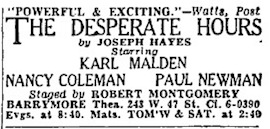 Smarting from being talked into such a stinker, Paul Newman took control of his career and hightailed it back to New York. He accepted the gritty part of an escaped convict terrorizing a family in The Desperate Hours on Broadway and was a sensation, playing against the pretty-boy image Warner Bros. was only too keen to exploit. (The film version of this play, made in 1955, starred a much older Humphrey Bogart in Newman’s role.)
Smarting from being talked into such a stinker, Paul Newman took control of his career and hightailed it back to New York. He accepted the gritty part of an escaped convict terrorizing a family in The Desperate Hours on Broadway and was a sensation, playing against the pretty-boy image Warner Bros. was only too keen to exploit. (The film version of this play, made in 1955, starred a much older Humphrey Bogart in Newman’s role.)
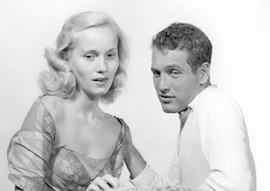 Newman then starred in a wonderful TV version of Our Town directed by Delbert Mann. I once took a class at UCLA in which Delbert Mann screened this near-perfect adaptation of Thornton Wilder’s story starring Newman as George and the radiant Eva Marie Saint as Emily. Eva Marie was at the screening, and talked about how much she loved working with Paul Newman, what a pure and generous actor he was.
Newman then starred in a wonderful TV version of Our Town directed by Delbert Mann. I once took a class at UCLA in which Delbert Mann screened this near-perfect adaptation of Thornton Wilder’s story starring Newman as George and the radiant Eva Marie Saint as Emily. Eva Marie was at the screening, and talked about how much she loved working with Paul Newman, what a pure and generous actor he was.
Newman’s triumphant return to the movies was as Rocky Graziano in Somebody Up There Likes Me. James Dean had been signed for the part but after his tragic death it went to his friend Paul. Newman’s Our Town costar, Eva Marie Saint, was supposed to play Norma, but the part went instead to his Silver Chalice wife, Pier Angeli. Luckily, he got great reviews for the film and his toga days were all but forgotten. Here’s the trailer for the role that saved Paul Newman’s film career:
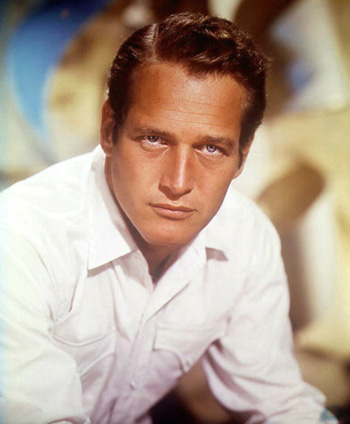 Paul Newman was a class act to the end. Wonderful actor, amazing philanthropist, tireless humanitarian, unapologetic liberal. He once said that getting on Nixon’s enemy list was the single greatest honor of his life. After the homosexual aspects of his character in Cat on a Hot Tin Roof were toned down for the movie version by the skittish studio, Newman tried to star in a film version of the novel The Front Runner, about the love affair between a coach and his star runner. He was never able to get it off the ground. “I’m a supporter of gay rights,” he said. “And not a closet supporter either. From the time I was a kid, I have never been able to understand attacks upon the gay community. There are so many qualities that make up a human being…by the time I get through with all the things that I really admire about people, what they do with their private parts is probably so low on the list that it is irrelevant.”
Paul Newman was a class act to the end. Wonderful actor, amazing philanthropist, tireless humanitarian, unapologetic liberal. He once said that getting on Nixon’s enemy list was the single greatest honor of his life. After the homosexual aspects of his character in Cat on a Hot Tin Roof were toned down for the movie version by the skittish studio, Newman tried to star in a film version of the novel The Front Runner, about the love affair between a coach and his star runner. He was never able to get it off the ground. “I’m a supporter of gay rights,” he said. “And not a closet supporter either. From the time I was a kid, I have never been able to understand attacks upon the gay community. There are so many qualities that make up a human being…by the time I get through with all the things that I really admire about people, what they do with their private parts is probably so low on the list that it is irrelevant.”
Newman’s feelings about his good looks were complex. Although regarded today as a brilliant actor, his looks were once seen as an impediment to his career. Lee Strasberg said that though Newman was as talented as Brando, he wasn’t taken as seriously because he was so damn handsome. Newman himself once said the only thing he didn’t want his epitaph to say was “Here lies Paul Newman who died a failure because his eyes turned brown.” The first time he remembered women going crazy for him was during the shooting of Hud in Texas. “Women were literally trying to climb through the transoms at the motel where I stayed. At first, it’s flattering to the ego. At first. Then you realize that they’re mixing me up with the roles I play—characters created by writers who have nothing to do with who I am.”
And speaking of his appeal in Hud, check out this short but sizzling scene between Paul Newman and housekeeper Patricia Neal:
I’ve repeatedly said that for people with as little in common as Joanne and myself, we have an uncommonly good marriage. We are actors. We make pictures and that’s about all we have in common. Maybe that’s enough. Husbands and wives should have separate interests, cultivate different sets of friends and not impose on the other…You can’t spend a lifetime breathing down each other’s necks.
I never ask my wife about my flaws. Instead I try to get her to ignore them and concentrate on my sense of humor. You don’t want any woman to look under the carpet, guys. Joanne believes my character in a film we did together, Mr. and Mrs. Bridge, comes closest to who I really am. I personally don’t think there’s one character who comes close…but I learned a long time ago not to disagree on things that I don’t have a solid opinion about.
The oddest but perhaps most flattering thing Newman said about Woodward, in replying to a reporter’s question about adultery: “Why fool around with hamburger when you have steak at home?”
A few years before he died, Newman said, “I’d like to be remembered as a guy who tried—who tried to be part of his times, tried to help people communicate with one another, tried to find some decency in his own life, tried to extend himself as a human being. Someone who wasn’t complacent, who didn’t cop out.”
Mission accomplished, Paul.

